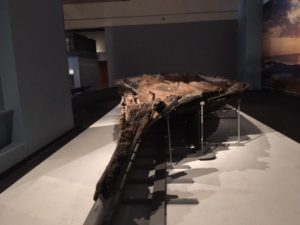AUSTIN — Wherever he is, I am quite certain Bob Bullock — the late and legendary Texas lieutenant governor — is a happy man.
Why? Because a museum built and dedicated in his memory is a sight to behold. Its artifacts are educational in the extreme. Its ambience is welcoming, as are the docents scattered on all three of its floors willing to explain the whys and wherefores of Texas history.
I pledged to go to the Bullock Museum of Texas History upon visiting the Texas capital city. Today I did so.
https://highplainsblogger.com/2018/03/planning-for-an-education-on-texas-history/
It is so very interesting.
The museum opened in 2001, two years after Bullock’s death. He had lobbied hard to get a history museum built. He managed to persuade the powers that be to erect the museum not far from the University of Texas and the State Capitol where Bullock toiled for the last part of his lengthy public service career.
It is a marvelous tribute to someone I didn’t know well, but someone about whom I had learned a great deal upon arriving in Texas in the spring of 1984.
I learned that he was one tough son of a bi***. He was irascible, a bit of a grouch. He didn’t suffer fools at all — let alone lightly. He was a classic conservative Texas Democrat, which meant that he favored the working man and woman but didn’t take up the cudgel often for progressive social causes.
He also worked well with Republicans. Bullock and a fellow Democrat, former House Speaker Pete Laney, developed a constructive — and productive — working relationship with Republican Gov. George W. Bush. They worked as an effective team until 1999, when Bullock left office; he would die later that year of cancer.
The Bullock Museum tells the story of Texas in multiple parts. It tells visitors about the wreck of the LaBelle (the remains of which are pictured above), a French ship that sank in Matagorda Bay in 1684 after sailing to the New World from Europe, a mission it wasn’t even designed to complete.
It walks visitors through the fight to gain independence from Mexico, Texas’s nine-year existence as an independent nation and then its annexation into the United States in February 1845.
I won’t go through all that the museum contains.
I’ll just add this takeaway: As much as the state celebrated the sesquicentennial of its independence from Mexico, while giving relatively short shrift to the 150 years since its annexation into the United States, so does the Bullock Museum.
I say this not as a criticism, per sue, but merely as an observation.
I am thrilled to have finally seen this sampling of Texas’s rich history.
